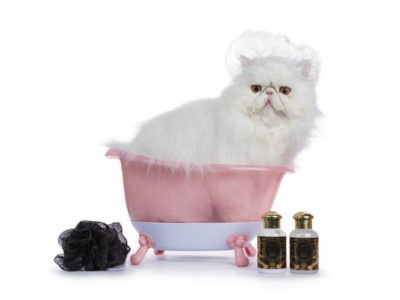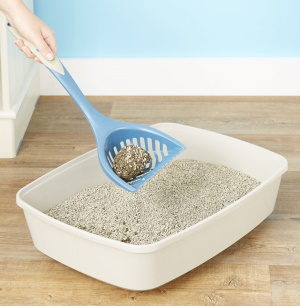How to Keep Cats Out of a Sandbox – 12 Tips to Follow
By Kit Copson
Updated on

If you have an outdoor sandbox, you have probably discovered how quickly cats will turn it into a backyard litter box. No one wants their kids playing in a cat’s bathroom, especially since the culprit is most likely a territorial, feral cat. The good news is that there are humane ways to keep cats out of your sandbox!
Why Cats Love Sandboxes
Sandboxes are an outlet for a cat’s natural instincts. Even feral cats that aren’t litter-trained will be drawn to do their business in soft, sandy soils because they like how it feels. It enables them to paw around and cover up their excrement in an effort to hide their scent from predators.
Cat litter is designed to capitalize on this instinct. Most commercial cat litters have the same grainy texture as sand does, so it’s no wonder that cats love to play in sandboxes!
The problem is that exposure to cat feces puts you and your family at risk of contracting diseases and parasites. Roundworms, toxoplasmosis, and other toxins are transferred through cat feces. These diseases and parasites can spread to humans, so it’s best to keep cats out of the sandbox entirely.
12 Tips to Keep Cats Out of a Sandbox
1. Cover the sandbox
The easiest and most straightforward solution to keeping cats out of a sandbox is to cover it when it’s not in use. This also helps keep rain, snow, and debris out of your sand and keeps the area cleaner overall. If your sandbox didn’t come with a cover, you could make one yourself out of wood, fabric, or lattice. Make sure it’s easy to take off and replace when you need to, and make it heavy enough that it won’t come off during heavy winds.
2. Fencing
Placing a fence around your sandbox can help keep cats out, but you’ll have to ensure that it’s cat-proof fencing. Cats are experts at scaling walls and traditional wood fences, so you’ll need a little creativity. Chicken wire is a good option because cats dislike the feeling of walking on the wire. Garden fencing designed for keeping out wild animals like rabbits is also a great choice.
3. Use cat-deterrent plants
The scents of certain shrubs are distasteful to cats. Planting vegetation around a sandbox that cats don’t like will cut down on them entering the sandbox. Lavender, rosemary, rue, lemon balm, and thorny bushes are good choices.

4. Clean the sandbox
Removing existing waste by emptying the sandbox can help stop cats from using it as a bathroom. Cats inherently like to go where they smell feces, so it’s a vicious cycle. Once the sandbox has been pooped in once, it will be again. Removing all waste and changing the sand regularly can help break the cycle.
5. Create a cat-friendly zone
Distractions can work wonders. Creating an alternative “litter box” zone near your sandbox that cats enjoy playing in can help take their mind off playing in the sandbox. Try spreading cat litter over a patch of grass, or sprinkle cat treats on their new spot to get their attention.
6. Keep your cat indoors
If it’s your cat that’s using the sandbox, the easiest solution is to keep them inside. Even cats that were once outside full-time can easily adjust to being indoor cats. Just make sure to give them plenty of toys and safe climbing places. Your cat staying inside won’t only keep your sandbox clean, but it will also help keep your cat safe from wild animal attacks, prevent your garden from being damaged, and protect other animals, like backyard birds.

7. Install a motion-activated sprinkler
Most cats hate water. To capitalize on this, try installing a motion-activated sprinkler near the sandbox. If a cat gets sprayed every time they try to go in, they will soon stop trying.
8. Use an ultrasonic cat-repellent device
You can purchase motion-activated ultrasonic sound equipment that emits sounds at a frequency that cats can hear but humans can’t. Attaching this device to the sandbox itself or to a post nearby ensures that when a cat approaches, they will hear an irritating noise that will scare them away.
9. Use commercial scent deterrent
There are various cat repellents on the market to deter cats from using your sandbox. You can spray them around the perimeter to make the sandbox unappealing. You’ll need to spray them approximately once per week and after periods of rain to make sure the smell stays.

10. Use food
You can DIY scent repellents from food if you’d prefer not to spend too much. Scattering foods that cats find repulsive will discourage them from entering the sandbox. Options include coffee grounds, onions, orange peels, vinegar, eucalyptus oil, cayenne pepper, and citronella.
11. Training
This tip only works if it’s your pet causing the problem, but if you wish to let your cat outside, training your cat to stay out of the sandbox is an option. You’ll need to supervise your kitty’s outdoor playtime, but you can use re-direction and saying, “No,” to teach your cat to find an alternate play space.
12. Supervision
As with training, simply staying with your cat while they are outside will help you keep them out of the sandbox. You can also put your cat on a tether or leash so you can control their ability to reach the sandbox.

Summary
Cats accessing a sandbox can transfer dangerous parasites and illnesses to kids who play in the sand. Luckily, it’s not too difficult to keep cats out of the sandbox, and there are multiple safe, humane options to choose from. You may have to try a few different tactics to find the most effective one, but at least you won’t have to worry about harming cats in the process.
Featured Image Credit: Avatu, Shutterstock











